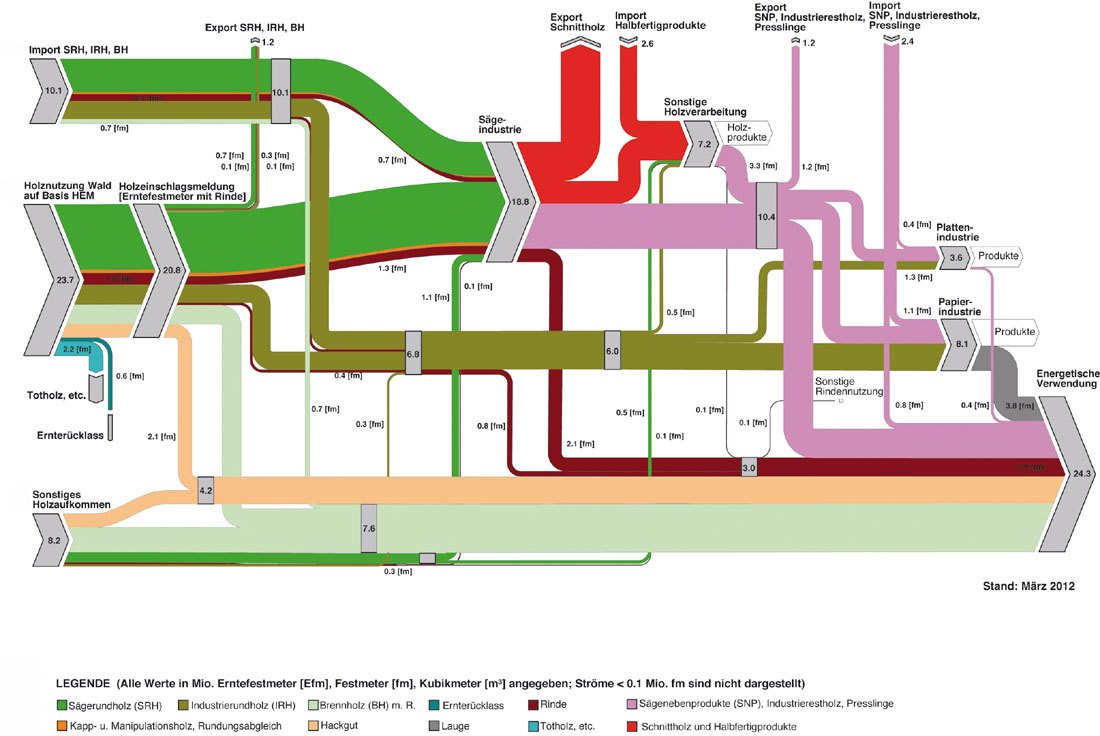After many national energy flow balances, some of which I have presented here on the blog, energy flow balances on a regional level are now coming out of France.
Benoît Thévard who writes on the ‘Avenir Sans Petrol’ blog (a French version of Peak Oil) has an interesting post on ‘Un scénario de transition énergétique citoyen pour la Région Centre’ (translated: An civil energy transition scenario for the Central Region). It summarizes a report published March 2015 by VEN Virage Energie Centre-Val de Loire.
The report features two Sankey diagrams. The first on page 33 is for the actual 2009 energy flows in Centre-Val de Loire (check here to find out about this French region)
Flows are in TWh. Production of nuclear energy comes with huge losses (efficiency approx. 35%). The main consumers in the region are residential and services, followed by transport. Energy consumption in industry plays a comparably smaller role in the region. The report explains that the region is vast and not densely populated and houses are older and larger on average compared to other regions (“le territoire est vaste et peu dense et les logements sont anciens et sont plus grands”). Another report mentioned on p. 21 calls the region énergívore (a beautiful word I read for the first time).
The other Sankey diagram on page 37 shows a nuclear-free and almost fossil fuel free scenario for 2050. Overall consumption is drastically reduced (2009 energy consumption approximately 75 TWh, 2050 energy consumption scenario 32,4 TWh). The scenario relies on a diversification of energy sources with an emphasis on wind energy and biogas. The region would hardly export any energy in 2050 anymore.
Just like for the India 2031 scenario I discussed in my last post, the two Sankey diagrams shouldn’t be compared directly, since the scale is different.
The report also has clear and straight-forward explanation on how to read the diagrams (page 32). This “diagramme de Sankey se lit de la gauche vers la droite, en partant des productions régionales d’énergie primaire et des importations, sur la gauche, pour aller jusqu’au consommateur final, sur la droite. L’épaisseur des traits est proportionnelle aux flux physiques exprimés en TWh.”
I think this a remarkable piece of information for the public. And not only because it contains Sankey diagrams. It is beautifully non-academic and inspiring to read. Those of you who understand French should have a look.

